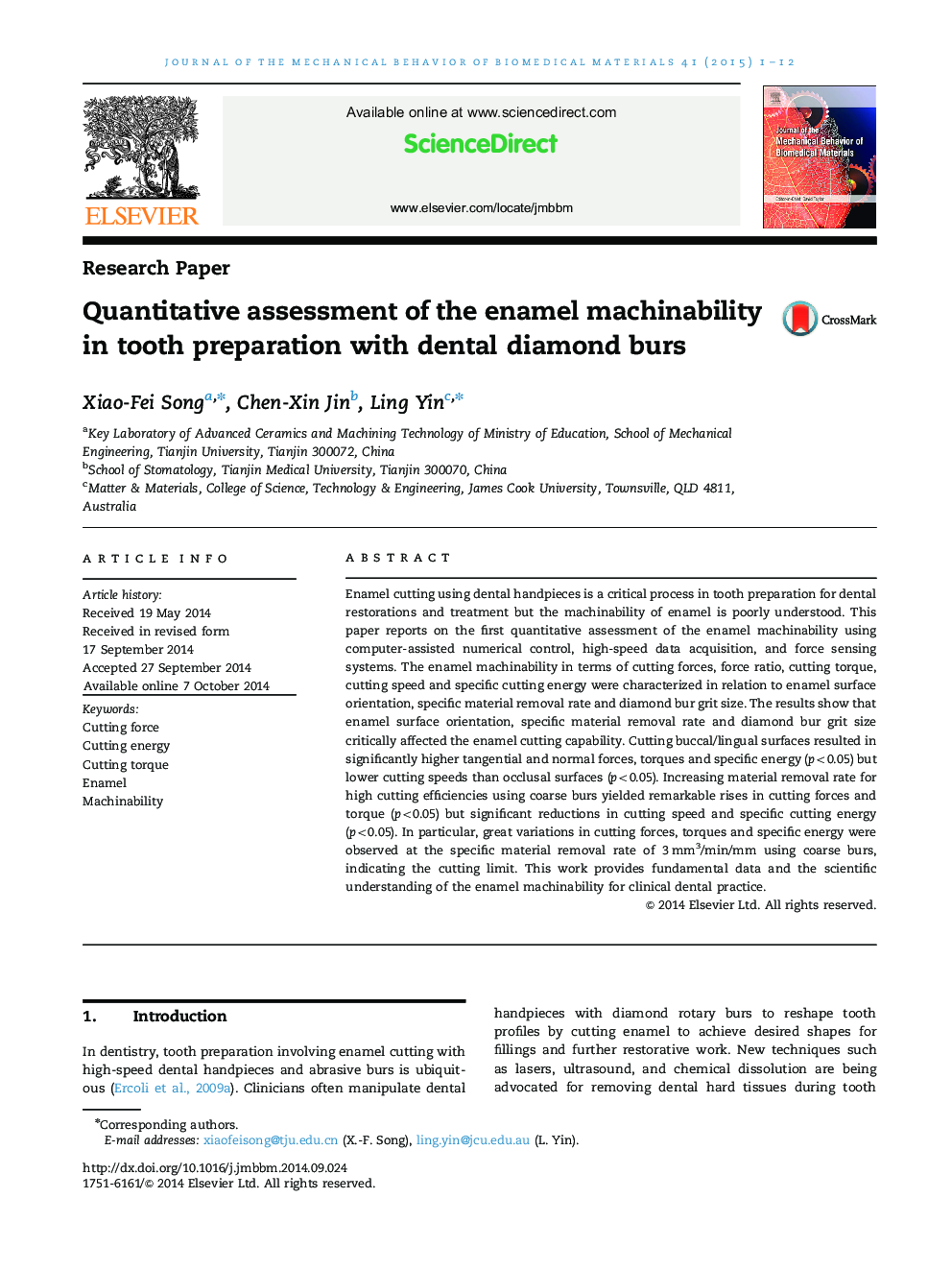| Article ID | Journal | Published Year | Pages | File Type |
|---|---|---|---|---|
| 7208539 | Journal of the Mechanical Behavior of Biomedical Materials | 2015 | 12 Pages |
Abstract
Enamel cutting using dental handpieces is a critical process in tooth preparation for dental restorations and treatment but the machinability of enamel is poorly understood. This paper reports on the first quantitative assessment of the enamel machinability using computer-assisted numerical control, high-speed data acquisition, and force sensing systems. The enamel machinability in terms of cutting forces, force ratio, cutting torque, cutting speed and specific cutting energy were characterized in relation to enamel surface orientation, specific material removal rate and diamond bur grit size. The results show that enamel surface orientation, specific material removal rate and diamond bur grit size critically affected the enamel cutting capability. Cutting buccal/lingual surfaces resulted in significantly higher tangential and normal forces, torques and specific energy (p<0.05) but lower cutting speeds than occlusal surfaces (p<0.05). Increasing material removal rate for high cutting efficiencies using coarse burs yielded remarkable rises in cutting forces and torque (p<0.05) but significant reductions in cutting speed and specific cutting energy (p<0.05). In particular, great variations in cutting forces, torques and specific energy were observed at the specific material removal rate of 3Â mm3/min/mm using coarse burs, indicating the cutting limit. This work provides fundamental data and the scientific understanding of the enamel machinability for clinical dental practice.
Related Topics
Physical Sciences and Engineering
Engineering
Biomedical Engineering
Authors
Xiao-Fei Song, Chen-Xin Jin, Ling Yin,
